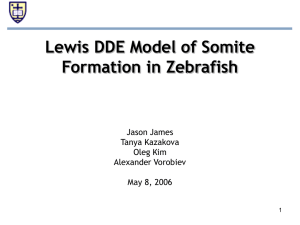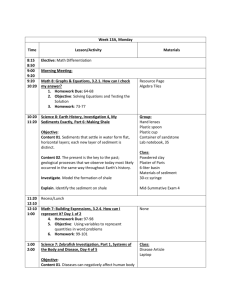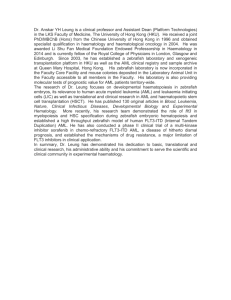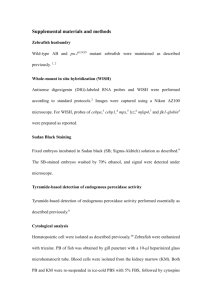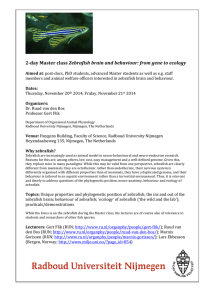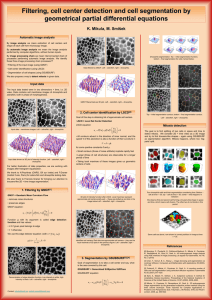Supplementary References - Word file (28 KB )
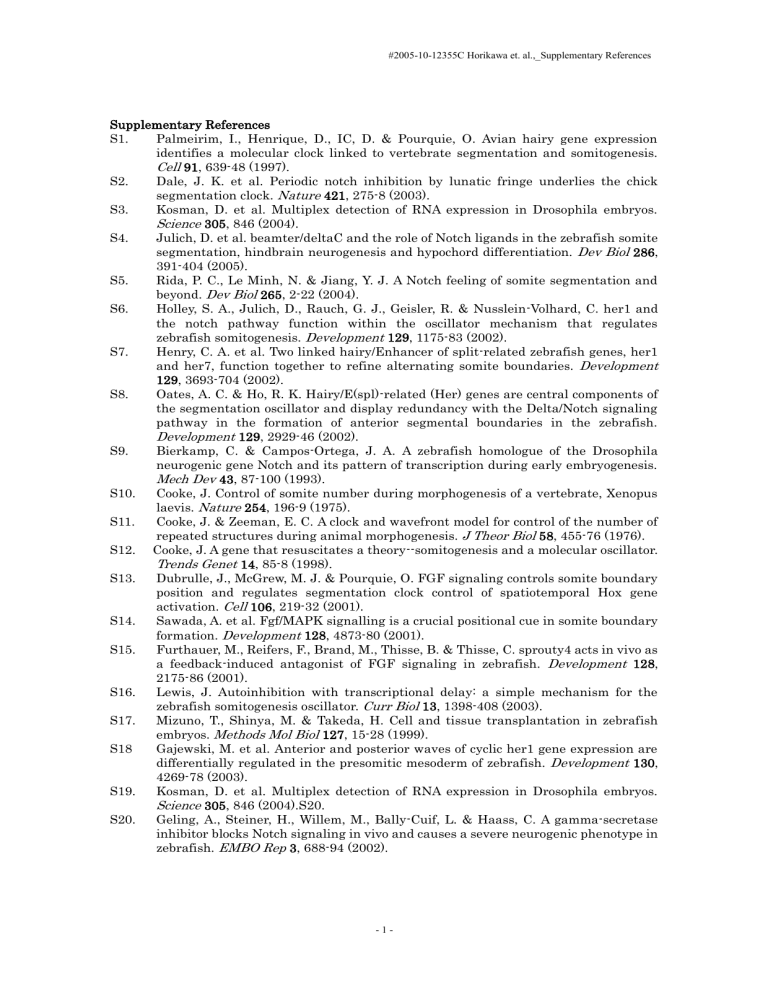
#2005-10-12355C Horikawa et. al.,_Supplementary References
Supplementary References
S1. Palmeirim, I., Henrique, D., IC, D. & Pourquie, O. Avian hairy gene expression identifies a molecular clock linked to vertebrate segmentation and somitogenesis.
Cell
91, 639-48 (1997).
S2.
S3.
Dale, J. K. et al. Periodic notch inhibition by lunatic fringe underlies the chick segmentation clock.
Nature
421, 275-8 (2003).
Kosman, D. et al. Multiplex detection of RNA expression in Drosophila embryos.
S4.
S5.
S6.
Science
305, 846 (2004).
Julich, D. et al. beamter/deltaC and the role of Notch ligands in the zebrafish somite segmentation, hindbrain neurogenesis and hypochord differentiation.
Dev Biol
265, 2-22 (2004).
Dev Biol
286,
391-404 (2005).
Rida, P. C., Le Minh, N. & Jiang, Y. J. A Notch feeling of somite segmentation and beyond.
Holley, S. A., Julich, D., Rauch, G. J., Geisler, R. & Nusslein-Volhard, C. her1 and
S7.
S8. the notch pathway function within the oscillator mechanism that regulates zebrafish somitogenesis.
Development
129, 1175-83 (2002).
Henry, C. A. et al. Two linked hairy/Enhancer of split-related zebrafish genes, her1 and her7, function together to refine alternating somite boundaries.
Development
129, 3693-704 (2002).
Oates, A. C. & Ho, R. K. Hairy/E(spl)-related (Her) genes are central components of the segmentation oscillator and display redundancy with the Delta/Notch signaling pathway in the formation of anterior segmental boundaries in the zebrafish.
S9.
Development
129, 2929-46 (2002).
Bierkamp, C. & Campos-Ortega, J. A. A zebrafish homologue of the Drosophila neurogenic gene Notch and its pattern of transcription during early embryogenesis.
Mech Dev
43, 87-100 (1993).
S10. Cooke, J. Control of somite number during morphogenesis of a vertebrate, Xenopus laevis.
Nature
254, 196-9 (1975).
S11. Cooke, J. & Zeeman, E. C. A clock and wavefront model for control of the number of repeated structures during animal morphogenesis.
J Theor Biol
58, 455-76 (1976).
S12. Cooke, J. A gene that resuscitates a theory--somitogenesis and a molecular oscillator.
Trends Genet
14, 85-8 (1998).
S13. Dubrulle, J., McGrew, M. J. & Pourquie, O. FGF signaling controls somite boundary position and regulates segmentation clock control of spatiotemporal Hox gene activation.
S14. Sawada, A. et al. Fgf/MAPK signalling is a crucial positional cue in somite boundary formation. embryos.
Cell
106, 219-32 (2001).
Development
128, 4873-80 (2001).
S15. Furthauer, M., Reifers, F., Brand, M., Thisse, B. & Thisse, C. sprouty4 acts in vivo as a feedback-induced antagonist of FGF signaling in zebrafish.
2175-86 (2001).
S16. Lewis, J. Autoinhibition with transcriptional delay: a simple mechanism for the zebrafish somitogenesis oscillator.
S17. Mizuno, T., Shinya, M. & Takeda, H. Cell and tissue transplantation in zebrafish
Methods Mol Biol
Curr Biol
13, 1398-408 (2003).
127, 15-28 (1999). differentially regulated in the presomitic mesoderm of zebrafish.
Development
S18 Gajewski, M. et al. Anterior and posterior waves of cyclic her1 gene expression are
Development
128,
130,
4269-78 (2003).
S19. Kosman, D. et al. Multiplex detection of RNA expression in Drosophila embryos.
Science
305, 846 (2004).S20.
S20. Geling, A., Steiner, H., Willem, M., Bally-Cuif, L. & Haass, C. A gamma-secretase inhibitor blocks Notch signaling in vivo and causes a severe neurogenic phenotype in zebrafish.
EMBO Rep
3, 688-94 (2002).
- 1 -




